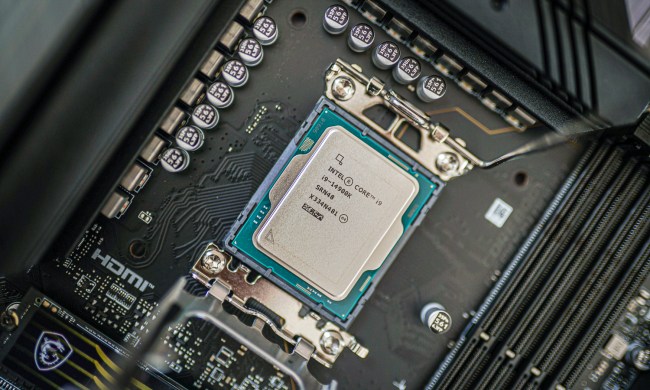It’s no secret that some of Nvidia’s best graphics cards could use a little more VRAM. According to a new leak, Nvidia may be addressing that problem in a big way — at least in laptops. The RTX 5090 laptop GPU is now reported to come with 24GB VRAM across a 256-bit memory bus. The downside? These new laptops might not make it to market as soon as we’d hoped.
The information comes from Moore’s Law Is Dead, who cites his own industry sources as he spills the beans on RTX 50-series laptop specs. Up until now, we’ve not heard much about Nvidia’s plans for RTX 50 laptops, indicating that they might be a few months away. The YouTuber agrees with this, saying that Nvidia might be targeting a launch window in the first or second quarter of 2025. This might not affect the entire lineup, though.
The reason why Nvidia might be planning to increase the VRAM on the laptop RTX 5090 is that it’s planning to use newer GDDR7 memory modules for it, with 3GB, up from 2GB. This boosts the memory capacity from 16GB (which the company used in this generation) to 24GB. However, as Moore’s Law Is Dead speculates, that also might be why Nvidia is holding off on the RTX 5090 laptop GPU in particular.

According to the YouTuber, Nvidia’s current plan is to first launch the RTX 5090 and the RTX 5080 in their desktop versions this year. It’s worth noting that most leakers disagree with this timeline — the GPUs aren’t expected to be announced until CES 2025 at this point.
Following the reported desktop launch, Nvidia is said to be unveiling some RTX 50-series laptops at CES 2025 in January, but those will all use the memory modules that are ready now, meaning the 2GB versions. As per the source cited by Moore’s Law Is Dead, the RTX 5090M doesn’t come in a 16GB configuration at all, which is why it won’t be launched alongside the rest of the lineup. Laptop cards like the RTX 5080, RTX 5070, and RTX 5060 might all still make an appearance at CES and launch shortly after with 16GB, 12GB, and 8GB of memory, respectively. They’ll use the 2GB modules, though.
One interesting thing to note is that, while Nvidia will likely use the GB203 die for the desktop RTX 5080 and then use that same die for the RTX 5090 (laptop version), the desktop card will still be limited to just 16GB of memory. In the grand scheme of things, this kind of adds up — if Nvidia is launching desktop GPUs first, the RTX 5080 wouldn’t have been ready with more memory assuming that these 3GB modules aren’t readily available yet. But all of this is still just speculation, and the final specs are unknown to the public.
More VRAM on laptop GPUs is certainly good news for gamers, but it’s hard to know how much of this will turn out to be true. As things stand now, we might not have any concrete information until CES 2025.




